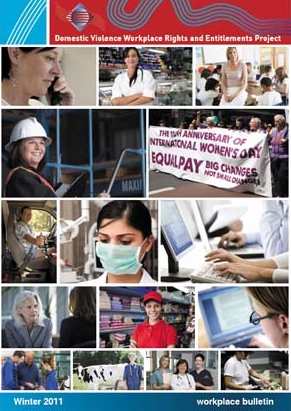
Internationally, the links between economic independence, being in paid employment and the impact of domestic violence have been steadily developing. The evidence is that women with a history of domestic violence have a more disrupted work history, are consequently on lower personal incomes, have had to change jobs more often and are employed at higher levels in casual and part–time work than women with no experience of violence.
In Australia, research published by the Australian Domestic and Family Violence Clearinghouse found that a number of initiatives to address the issue of domestic violence and the workplace had been valuable but relied on the commitment of a senior, influential individual within the organisation. The challenge for Australia, the researchers concluded, remained to introduce sustainable and widespread change.
Discussions between the Clearinghouse and the Public Service Association of New South Wales in 2009 led to the development of a set of model domestic violence clauses. These clauses were logged by the union as part of bargaining for an enterprise agreement in the university sector in April 2010. As a result of growing national interest, the Commonwealth Department of Education, Employment and Workplace Relations funded the Centre for Gender–Related Violence Studies at the University of New South Wales to undertake the Domestic Violence Workplace Rights and Entitlements Project. The Clearinghouse, which forms a part of the centre, is overseeing the project.
In this special bulletin, we bring you the latest news on the national project and report on its achievements to date.
Related Articles:
 Home | Aims and Objectives of Solidarity Philippines Australia Network | About Kasama
Home | Aims and Objectives of Solidarity Philippines Australia Network | About Kasama 
Search the SPAN Web